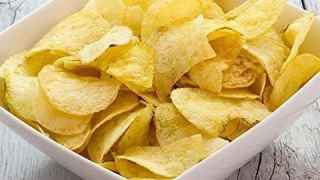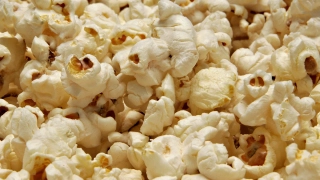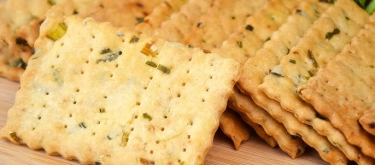Pretzel: Taste Profile, Aroma, Benefits and Health Risks
Pretzel, also known as Brezel in German-speaking countries, is a baked snack with centuries of history in Europe. Originating in monasteries as a simple bread reward for children, pretzels have become a global snack — soft versions served fresh in bakeries and fairs, and crunchy versions sold in packets worldwide. Their iconic twisted shape and characteristic shiny brown surface make them instantly recognizable.
Pretzels are made from wheat flour and therefore contain gluten. Not suitable for individuals with celiac disease or gluten intolerance. Some industrial pretzels may contain additives or traces of milk and sesame.
What does Pretzel taste like?

Complete Sensory Description
-
Taste:
At first bite, pretzels deliver a distinct saltiness that dominates the palate, followed by a mild malty sweetness from the dough. Chewy soft pretzels offer a balanced profile between wheat-like depth and savory salt. Hard pretzels intensify the toasted, roasted flour notes, leaving a cleaner finish with less lingering sweetness. -
Aroma:
Freshly baked soft pretzels release a warm, yeasty aroma with subtle hints of caramelized crust. Hard pretzels have a drier, slightly roasted cereal-like smell. Salt crystals on the surface add a faint mineral sharpness. -
Texture:
Soft pretzels are chewy, slightly dense, and moist inside, contrasting with their crisp, browned crust. Hard pretzels are brittle, crunchy, and shatter easily when bitten, offering a dry mouthfeel. -
Appearance:
Typically golden-brown, formed into twisted knots or rods, often sprinkled with coarse salt. The surface has a shiny glaze, the result of lye or baking soda treatment before baking.
Variations depending on preparation:
-
Soft pretzel: chewy, malty-sweet interior with a balance of salt and yeast flavor.
-
Hard pretzel: sharper toasted notes, stronger crunch, less sweetness.
-
Salted vs unsalted: salt enhances flavor intensity, while unsalted pretzels taste plainer, closer to lightly baked breadsticks.
-
Flavored pretzels (cheese, mustard, sweet coatings): added layers modify the dominant salt-bread base, creating savory or sweet variations.
In-depth Flavor Analysis
The pretzel’s taste comes from a unique combination of dough chemistry, alkaline treatment, and baking reactions.
-
Flavor-forming processes
-
Alkaline wash (lye or baking soda): Creates the shiny crust and generates specific compounds that add roasted, slightly bitter notes.
-
Maillard reaction: Interaction of amino acids and sugars under high heat forms pyrazines, giving the signature nutty, toasty aroma.
-
Caramelization: Adds mild sweetness in soft pretzels and more intense roasted depth in hard pretzels.
-
-
Preparation conditions → flavor change
-
Soft pretzels (shorter bake, higher moisture): Yeast flavors and malty sweetness are preserved.
-
Hard pretzels (longer bake, lower moisture): More concentrated roasted notes, less sweetness, drier finish.
-
Salt application: Enhances perception of both sweetness and umami in the dough, balancing bitterness from the crust.
-
-
Control points for chefs
-
Adjust roast level → lighter for sweetness, darker for bitterness and depth.
-
Experiment with salt crystals vs. fine salt → changes burst of saltiness on the tongue.
-
Add spices or coatings → sesame, mustard, or chocolate to expand flavor layers.
-
-
Potential issues
-
Overbaking leads to acrid bitterness from burnt crust.
-
Excess lye or soda wash can create unpleasant soapy notes.
-
Varieties and Culinary Applications
-
Varieties:
-
Soft pretzels (German and American fair-style, large, chewy).
-
Hard pretzels (small, crunchy twists, sticks, nuggets).
-
Flavored pretzels (cheese-coated, mustard-filled, chocolate-dipped).
-
-
Culinary uses:
Pretzels are consumed plain, dipped in mustard or cheese sauce, paired with beer, or incorporated into trail mixes and desserts. Soft pretzels often serve as a street food snack, while crunchy pretzels are mass-produced as shelf-stable packaged goods. Crushed pretzels can be used as breading or mixed into confections like chocolate bark.
Selection and Storage
-
Selection: Look for even golden-brown color, no burnt patches, fresh aroma. Soft pretzels should be chewy inside, crisp outside; hard pretzels should snap cleanly.
-
Storage: Soft pretzels are best eaten fresh; can be frozen and reheated. Hard pretzels should be stored airtight to prevent staling.

Nutritional Insights
Pretzels are primarily carbohydrate-based with moderate protein and low fat. They are, however, high in sodium. Soft pretzels may be enriched with butter or eggs, adding calories and fat. While not nutrient-dense, they provide quick energy and satiety.
Expert Insights & Culinary Tips
Chefs recommend briefly reheating soft pretzels to restore crust crispness. A brush of butter after baking adds richness. Nutritionists highlight sodium content and advise mindful portion sizes. Using whole-grain flours can improve nutritional value.
Interesting and Curious Facts
-
The pretzel shape is said to symbolize folded arms in prayer.
-
In Bavaria, pretzels are eaten with weisswurst (white sausage) and sweet mustard.
-
Pennsylvania produces 80% of the pretzels consumed in the United States.
Harm and Dietary Considerations
-
High sodium content may raise blood pressure.
-
Made with refined flour, offering limited nutritional density.
-
Unsuitable for gluten-intolerant or celiac individuals.
Religious Dietary Considerations
-
Generally acceptable across religions.
-
Some recipes using dairy or eggs may not fit vegan or fasting traditions.
Final Thoughts & Sensory Journey
Pretzels offer a simple yet layered experience: salt, roasted crust, and chewy or crunchy textures. From street vendors in Europe to packaged snacks worldwide, their flavor versatility has made them a timeless staple.
Resources
-
Smith, A.F. Snacks: A Global History. Reaktion Books, 2014. ISBN: 9781780233626
-
Heinzelmann, U. Beyond Bratwurst: A History of Food in Germany. Reaktion Books, 2014. ISBN: 9781780234029



